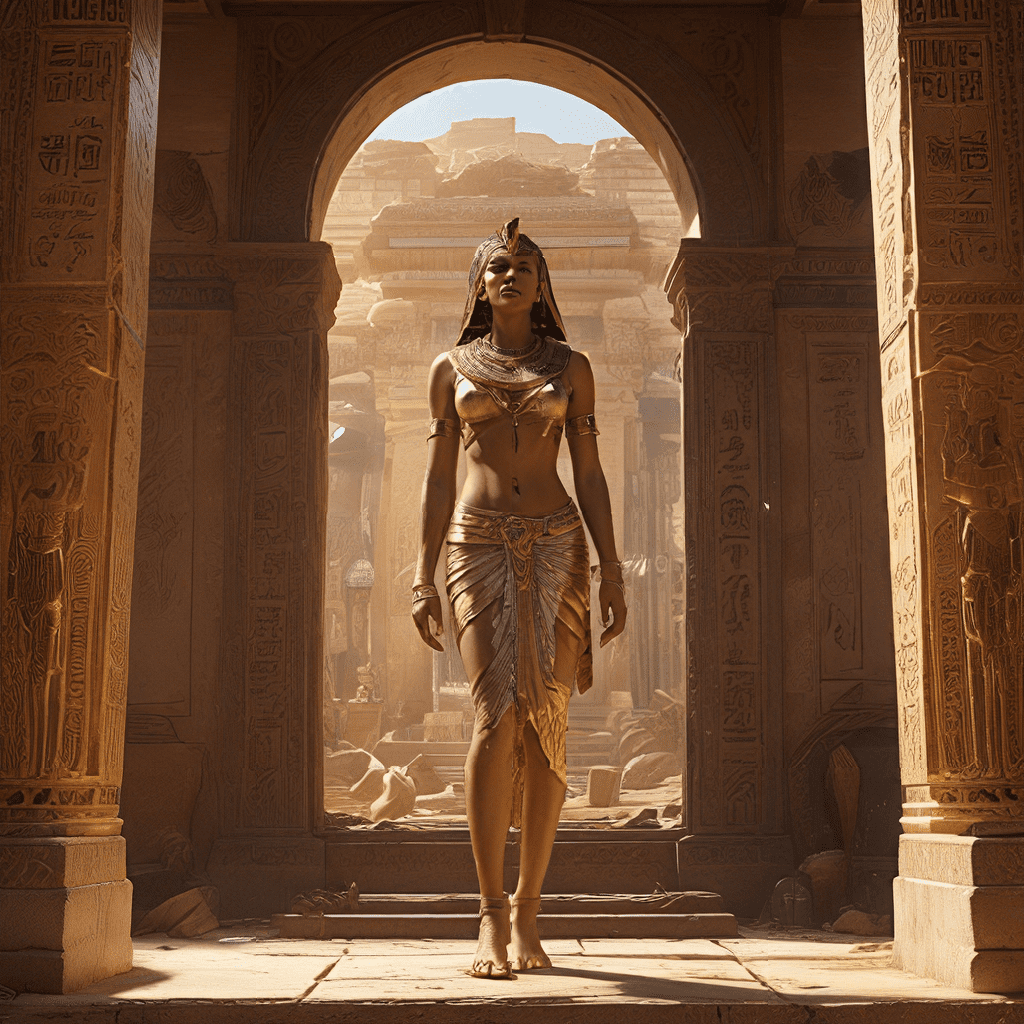The Egyptian Creation Myth: A Window into the Human Psyche
I. Introduction
The Egyptian creation myth, a cornerstone of ancient Egyptian civilization, narrates the birth of the universe and the emergence of humanity. This captivating story, passed down through generations, offers a profound window into the human psyche, revealing fundamental concerns about existence, the cosmos, and our place within it. Like all myths, the Egyptian creation narrative reflects the anxieties and aspirations of its creators, providing insights into their worldview and their understanding of the world around them. This article explores the Egyptian creation myth, examining its rich symbolism and its enduring relevance in understanding the human experience.
II. The Cosmic Egg: Genesis and Order
The Egyptian creation myth begins with the primordial waters of Nun, a vast, infinite ocean representing the state of nothingness before creation. From this watery abyss, emerges Atum, the self-created deity, the first being in existence. Atum, often depicted as a solitary god, embodies the principle of creation and the very essence of being. Through a process of self-generation, Atum gives birth to Shu, the god of air, and Tefnut, the goddess of moisture—the first pair of deities. This act of creation marks the transition from chaos to order, from nothingness to existence.
The symbolism of the cosmic egg, often associated with the creation story, holds profound significance. The egg represents potential, the unformed state before creation. It signifies the origin of all things, the source from which the universe and life itself emerge. This image emphasizes the idea of creation from within, highlighting the inherent power of the divine to bring forth existence.
III. The Role of Chaos and Order
The Egyptian creation myth doesn’t simply depict a harmonious world. It acknowledges the inherent tension between chaos and order, forces that permeate the cosmos. Isfet, the embodiment of chaos, represents the unpredictable and destructive forces that threaten to disrupt the universe. Ma’at, on the other hand, embodies order, harmony, and justice, the forces that maintain balance and stability. The struggle between these opposing forces is a recurring theme in Egyptian mythology, reflecting the ongoing battle between good and evil, light and darkness.
The myth portrays this struggle through the legend of Atum’s search for Shu and Tefnut, who had wandered into the chaotic depths of Nun. Atum’s journey and their eventual return symbolize the triumph of order over chaos. This narrative reflects the human experience of fear, uncertainty, and the unknown. It demonstrates the need for order and structure in a world often characterized by unpredictable forces.
IV. The Divine Order and Human Responsibility
The creation myth establishes a hierarchical and ordered universe, with humans occupying a specific place within it. The gods, who emerged from Atum’s self-creation, are responsible for maintaining cosmic order and overseeing the world. Humans, created by the gods, are expected to live in accordance with Ma’at, the divine law that governs the universe. Ma’at represents not only cosmic order but also moral standards, justice, truth, and righteousness. It is the foundation of ethical behavior and societal harmony.
The creation myth underscores the importance of human responsibility to uphold Ma’at. By living according to this divine law, humans ensure the stability of the universe and align themselves with the cosmic order. This emphasis on human responsibility reflects the Egyptian worldview, where individual actions have consequences for both the individual and the larger cosmos. The myth serves as a moral guide, encouraging individuals to strive for justice, balance, and righteousness in their lives.
V. The Afterlife and the Quest for Immortality
The Egyptian belief in the afterlife, a significant aspect of their culture, is deeply intertwined with the creation myth. The journey of the soul through the underworld, a concept central to the afterlife, is shaped by the themes of order, chaos, and the pursuit of eternal life. The creation myth, with its focus on the emergence of order from chaos, influences the conception of the afterlife, where the soul must navigate challenges and trials to achieve eternal life.
The creation myth also informs the Egyptians’ quest for immortality. The myth emphasizes the cycle of creation and destruction, reminding humans of the fragility of life and the inevitability of death. This understanding drives the Egyptians to seek ways to transcend death and achieve eternal life, a concept reflected in their elaborate funerary rituals, mummification practices, and belief in the afterlife.
The Egyptian creation myth, with its rich symbolism and profound insights, continues to resonate with us today. It provides a glimpse into the human need for meaning, understanding, and a sense of purpose in the face of the vastness of the cosmos and the mysteries of existence. The myth’s enduring power lies in its ability to address fundamental human anxieties and aspirations, reminding us of the enduring quest for order, stability, and a sense of belonging in a world that is often both chaotic and wondrous.




